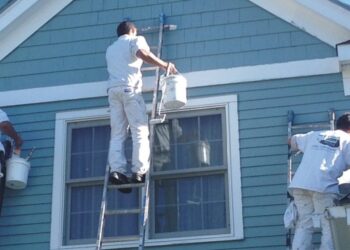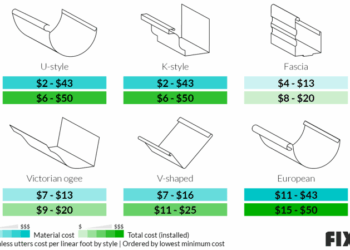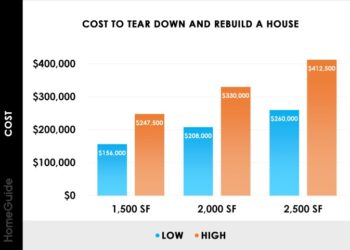Exploring the world of vinyl fencing vs wood fencing sheds light on the key differences, benefits, and considerations that play a crucial role in choosing the perfect fencing option for your property. Let's delve into this comparison to uncover the nuances that define these two popular choices.
As we navigate through the details of durability, maintenance, aesthetics, installation, and environmental impact, you'll gain a comprehensive understanding of how vinyl and wood fencing stack up against each other.
Introduction
Vinyl fencing and wood fencing are two popular options for residential and commercial properties looking to enhance security, privacy, and aesthetics. Vinyl fencing is made of PVC (polyvinyl chloride) material, offering a low-maintenance, durable, and weather-resistant solution. On the other hand, wood fencing provides a natural and traditional look, typically made from cedar, pine, or redwood.
Key Differences
- Vinyl fencing requires minimal maintenance, while wood fencing may need regular staining, painting, or sealing.
- Wood fencing offers a classic and rustic appearance, while vinyl fencing provides a clean and modern look.
- Vinyl fencing is generally more expensive upfront but can save costs in the long run due to its durability, whereas wood fencing tends to have a lower initial cost but may require more upkeep over time.
Common Uses and Popularity
- Vinyl fencing is often used in residential properties for privacy and security, as well as in commercial settings for its low maintenance requirements.
- Wood fencing is popular in both residential and commercial applications for its natural beauty and versatility in design options.
- Both types of fencing are commonly used for property boundaries, landscaping, and creating outdoor living spaces.
Durability
Vinyl fencing and wood fencing differ in terms of durability, which is a crucial factor to consider when choosing the right type of fencing for your property. Let's explore how these two materials stack up against each other.
Longevity Factors
When it comes to durability, vinyl fencing tends to outlast wood fencing due to its resistance to rot, decay, and pests. Vinyl fences are also not susceptible to moisture damage, which can significantly extend their lifespan compared to wood fences.
On the other hand, wood fencing requires regular maintenance such as staining, painting, and sealing to protect it from the elements and ensure its longevity.
Environmental Impact
Environmental factors play a significant role in the durability of both vinyl and wood fencing. For instance, exposure to harsh sunlight can cause vinyl fencing to fade over time, while extreme temperature fluctuations can lead to warping or cracking in wood fencing.
Additionally, heavy rainfall and high humidity levels can accelerate the decay of wood fencing, making it more vulnerable to rot.
Maintenance
When it comes to maintenance, both vinyl fencing and wood fencing have their own set of requirements to keep them in top condition.
Maintenance Requirements
For vinyl fencing, maintenance is relatively low compared to wood fencing. Vinyl fences simply need to be cleaned with soap and water to remove dirt and debris, and occasional inspections for any damage that may occur. They do not require staining, painting, or sealing like wood fences.
On the other hand, wood fencing requires regular maintenance to prevent rot, warping, and insect damage. This includes staining or painting every few years to protect the wood from the elements, as well as regular inspections for any signs of decay or damage that need to be addressed promptly.
Upkeep Tasks
- Wood Fencing: Regularly stain or paint, inspect for rot or damage, replace any damaged boards, and seal the wood to protect it from the elements.
- Vinyl Fencing: Clean with soap and water, inspect for any damage, and make any necessary repairs to ensure longevity.
Long-Term Maintenance Costs
While vinyl fencing may have a higher upfront cost compared to wood fencing, the long-term maintenance costs are significantly lower. With minimal upkeep required and no need for staining or painting, vinyl fencing can save homeowners time and money in the long run.
On the other hand, wood fencing may require more frequent maintenance and replacement of damaged parts, leading to higher long-term maintenance costs.
Aesthetics
Vinyl fencing offers a sleek and modern aesthetic that can enhance the overall look of a property. Its clean lines and smooth finish give a polished appearance that can complement contemporary or minimalist designs. On the other hand, wood fencing exudes a classic and timeless charm that adds warmth and character to any outdoor space.
Design Options
When it comes to design options, vinyl fencing comes in a variety of colors and styles to suit different preferences. Homeowners can choose from classic white, earthy tones, or even darker shades to match their exterior color scheme. Additionally, vinyl fencing can mimic the look of traditional wood without the maintenance.Wood fencing, on the other hand, offers a natural and rustic feel that can blend seamlessly with nature.
Different wood species like cedar, pine, or redwood provide unique textures and grains that add depth and richness to the fencing. Homeowners can also opt for stained or painted finishes to customize the look of their wood fence.
Architectural Styles
Vinyl fencing is versatile and can complement a wide range of architectural styles, from modern and contemporary to traditional and colonial. Its clean and uniform appearance can enhance the curb appeal of various home designs without overwhelming the overall aesthetic.Wood fencing, on the other hand, is a classic choice that pairs well with traditional, rustic, or cottage-style homes
The natural beauty of wood can soften the exterior of a property and create a welcoming and cozy atmosphere. Whether it's a picket fence for a cottage garden or a privacy fence for a craftsman-style home, wood fencing can enhance the architectural features of the property.
Installation
When it comes to installing vinyl fencing vs wood fencing, there are some key differences in the process. Below is a step-by-step guide for installing each type of fencing, along with any specialized tools or skills required.
Vinyl Fencing Installation
Installing vinyl fencing typically involves the following steps:
- Mark the layout of the fence line using string and stakes.
- Dig post holes at regular intervals, ensuring they are deep enough for stability.
- Insert and secure the vinyl fence posts in the holes with concrete for added support.
- Attach the rails and pickets to the posts, following the manufacturer's instructions.
- Finish by securing the gate and adding any finishing touches.
Specialized tools for vinyl fencing installation may include a post hole digger, level, concrete mix, and a power drill for attaching components.
Wood Fencing Installation
Installing wood fencing involves a slightly different process:
- Mark the fence line and dig post holes, similar to vinyl fencing installation.
- Insert wooden posts into the holes and secure them with concrete or gravel for stability.
- Attach horizontal rails to the posts, followed by the vertical pickets or panels.
- Finish by adding any gates or decorative elements as needed.
Specialized tools for wood fencing installation may include a post hole digger, level, hammer, nails or screws, and a saw for cutting materials to size.By following these step-by-step guides and using the necessary tools, you can successfully install both vinyl and wood fencing to enhance your property's aesthetics and functionality.
Environmental Impact
Vinyl fencing and wood fencing have differing environmental impacts due to the materials used, manufacturing processes, and disposal methods.
Sustainability of Materials
- Wood fencing is considered more sustainable as it is made from a renewable resource - trees. However, deforestation can be a concern if not managed properly.
- Vinyl fencing is made from PVC (polyvinyl chloride), which is a type of plastic. PVC is not biodegradable and comes from non-renewable resources like petroleum.
Manufacturing and Disposal Effects
- Wood fencing requires energy-intensive processes for cutting, treating, and shaping the wood. This can lead to carbon emissions and environmental degradation if not done sustainably.
- Vinyl fencing production involves the use of chemicals and releases toxic byproducts. The disposal of vinyl fencing can also be problematic as PVC does not break down easily and can release harmful substances into the environment.
Outcome Summary

In conclusion, whether you prioritize longevity, visual appeal, or eco-friendliness, both vinyl and wood fencing offer unique advantages worth exploring. By weighing the pros and cons discussed, you can make an informed decision that aligns with your needs and preferences.
Q&A
Is vinyl fencing more durable than wood fencing?
Vinyl fencing is generally considered more durable than wood fencing as it is not prone to rotting, warping, or insect damage like wood.
What are the maintenance requirements for vinyl fencing?
Vinyl fencing requires minimal maintenance, usually limited to occasional cleaning with soap and water. On the other hand, wood fencing needs regular staining, painting, and sealing to prevent decay.
Which type of fencing is more eco-friendly, vinyl, or wood?
Wood fencing is considered more environmentally friendly as it is a natural material. However, vinyl fencing can be recycled, making it a sustainable option as well.











